- Blog >
- What Does a Drone Cage Do? Use Cases, Types & Indoor...
What Does a Drone Cage Do? Use Cases, Types & Indoor Inspections
There are three different types of drone cages on the market—read this article to learn about each one.
Drone cages serve the dual purpose of protecting people from being hurt by a drone’s propellers while also protecting the propellers and the drone itself from being damaged in case of a collision.
A drone cage doesn’t just allow the drone to survive if it collides with something while in flight—a good one can actually allow the drone to collide and continue flying.
But not all drone cages are the same. Some drone cages are created as add-ons for commercial drones, while other drone cages are custom built for drones designed specifically for flying in cluttered or confined spaces, where collisions are more likely.
In this article we’re going to look at different scenarios that call for using a drone cage, the three different types of drone cages out there, and then go into detail about the most popular uses for drone cages.
Disambiguation—Drone Cages that Attach to Drones vs. Drone Enclosures in Which You Fly Drones
Before going any further, it’s important to note that the phrase drone cage can be used to refer to two different things.
Sometimes people say drone cage when they are talking about a drone enclosure for flying drones at a trade show, drone race, or some other event where people need to be protected in case something goes wrong with the drone.
These “cages”—or drone enclosures—can be made of net or wire mesh, like this:
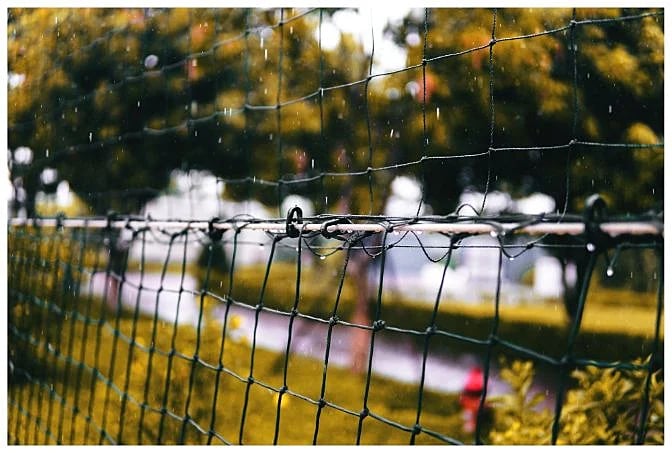
When we use the phrase drone cage in this article, we’re talking about cages that are attached to a drone, like this one on Flyability’s Elios 3:
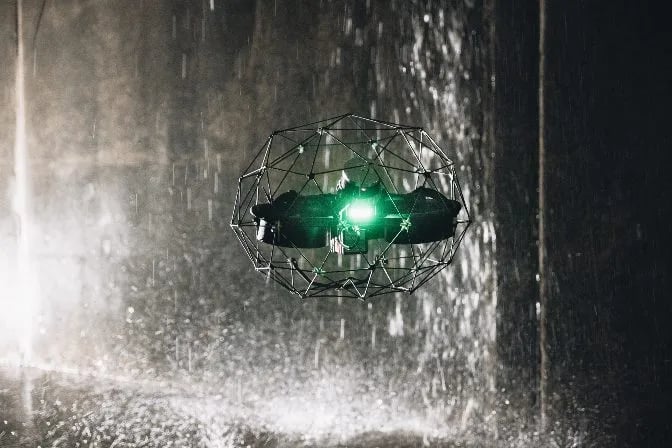
The Origin of the Drone Cage
If you think about applications, putting a cage around a drone opens up a multitude of new use cases. But, most importantly, the cage allows us to take aircrafts that were initially meant for flying outdoors and fly them inside of buildings and infrastructures.
One of the primary uses of drones indoors happens to be for industrial applications. But how did that happen? Where did the idea of putting a cage around a drone come from?
It turns out the idea first arose after a tsunami hit Japan in March of 2011.
As a result of the tsunami, the Fukushima nuclear reactor was compromised, creating an incredibly dangerous and unstable situation for everyone in the surrounding area. At the time, the need to supplement humans with robotics to assess the situation and put up remedy plans became a necessity. Unfortunately, the many attempts made to send crawling and walking robots failed miserably.
While watching this situation unfold on television, future Flyability Co-founders Patrick Thévoz (CEO) and Adrien Briod (CTO) wondered how it might be possible to collect visual data on the conditions inside the reactor using a flying robot to avoid exposing humans to dangerous radiation and working around the need to navigate in all three dimensions.
The eventual result of this line of thought were the creation of the Elios 1, the Elios 2, and the Elios 3 collision-tolerant drones in which the drone cage is part of the drone’s original design, not just something added on afterward.
 The Elios 3 drone cage in action
The Elios 3 drone cage in action
Why Do You Need a Drone to Enter a Confined Space?
Safety is the main reason to use a drone instead of a person for entering a confined space.
Consider the Fukushima nuclear power plant. At the time of the disaster it would not have been safe for a person to physically enter the plant to assess the extent of the damage, but having first-hand visual data on the conditions inside would have been invaluable.
Throughout the world, people regularly enter confined spaces to collect visual data in order to inform their decision-making. These might be inspectors entering a chimney, miners entering a mine, or first responders entering a burned out building.
Whatever the scenario, the reason for using a drone cage is the same: it removes the need for a person to endanger themselves.
Using a drone to enter a confined space instead of a person can also help companies save money.
In the case of inspections, using a drone to perform an inspection can help companies save hundreds of thousands of dollars by avoiding the need for costly scaffolding as well as the extra downtime required for building and taking the scaffolding down.
Where Do You Use a Drone Cage?
As explained earlier, drone cages serve the dual purpose of protecting people from being hurt by a drone’s propellers while also protecting the propellers and the drone itself from being damaged in case of a collision. As a result, they can be used everywhere where collisions are likely to happen and where humans and drones share space.
And as more people have encountered drones protected by cages, more use cases have arisen.
A drone cage can be useful in disaster scenarios, such as the one at the Fukushima nuclear plant, because they can replace the need for using humans to enter dangerous situations. But drone cages are also useful for everyday applications in various industries throughout the world.
One of the most common uses for a drone cage is to protect a drone while it collects visual data during routine inspections in big assets, such as boilers and pressure vessels in the Oil & Gas industry.
Here are some examples of the types of places where people are using drones protected by cages these days:
-
Inside a nuclear power plant, to support visual data collection for routine inspections.
- Inside a mine, to collect visual data on the state of its excavations (or the state of its stopes, as they say in mining).
-
Inside a burned out building, to collect visual data either after a fire for a potential arson investigation or during a fire for greater situational awareness.
-
Inside a sewer system, to help identify the cause of damage to the system (especially when the pipes are too small for a person to fit inside!).
-
Inside a water park, to collect visual data on the condition of park infrastructure and ensure that it is being properly maintained.
As you can see, there are lots of different use cases for drone cages. Can you think of any others?
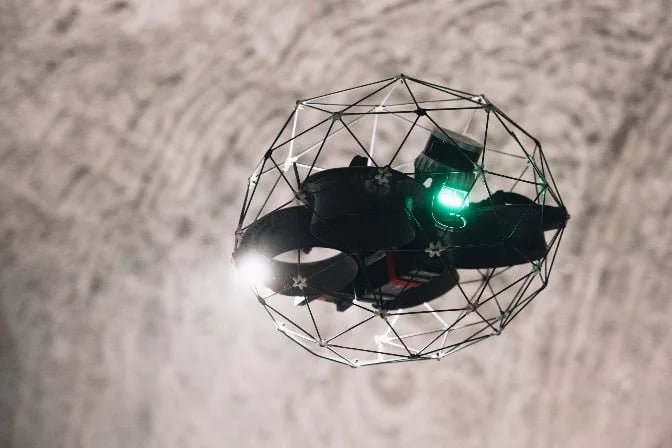
The Three Types of Drone Cages
There are currently three different types of drone cages on the market:
-
Add-on cages made to be attached to a commercial drone
-
Decoupled cages designed for a specific type of drone (like the Elios 1)
-
Fixed cages designed for a specific type of drone (like the Elios 2 and the Elios 3)
Read on to learn more about each type of drone cage.
1. Add-On Drone Cages
Add-on cages can be great for those who want to take extra safety precautions to ensure that their drone’s propellers can’t hurt anyone.
These cages snap onto a drone and are often made just for a specific drone model, since the cage must be somewhat customized for a drone’s shape and size.
Here are some examples:
DJI Drone Cage—Mavic 2 Enterprise
DJI Drone Cage—PGYTECH Protective Cage for the Tello Drone
Considerations with Add-on Drone Cages
While drones like the Tello or Mavic 2 Enterprise outfitted with add-on cages can be great for safety, they’re not ideal for many of the industrial use cases we listed above, like boiler inspections or flights inside of mines.
Here’s why:
-
Not collision tolerant. Putting a cage around a drone doesn’t necessarily make it collision tolerant, since collision tolerance is something that has to be taken into consideration when designing the drone itself. A Mavic 2 Enterprise might be protected by an add-on drone cage, but even with a cage on it could still be damaged by a collision.
-
Not made for inspections. Drones like the Elios 1, Elios 2, and Elios 3 come with features to help inspectors, like special dustproof lighting and the ability to fly in GPS-free environments. A commercial drone outfitted with an add-on cage, on the other hand, doesn’t have any of these inspection-specific features and won’t be an ideal tool for collecting inspection-grade visual data.
-
Heavy cage = shortened flight time. The extra weight of an add-on cage typically shortens a drone’s battery life by about 50%, which is important to take into account when considering add-on drone cages.
-
No obstacle sensing. Most drones that can be outfitted with third party cages, such as DJI’s Mavic 2 Enterprise, require you to turn off the drone’s obstacle sensing technology in order to fly with the cage. This is not ideal, especially if you’re planning to use the cage to fly in a confined space.
2. Decoupled Drone Cages
Flyability’s Elios 1 used a decoupled drone cage design, which means that the cage is decoupled on three different axes from the inner frame (i.e., the drone itself).
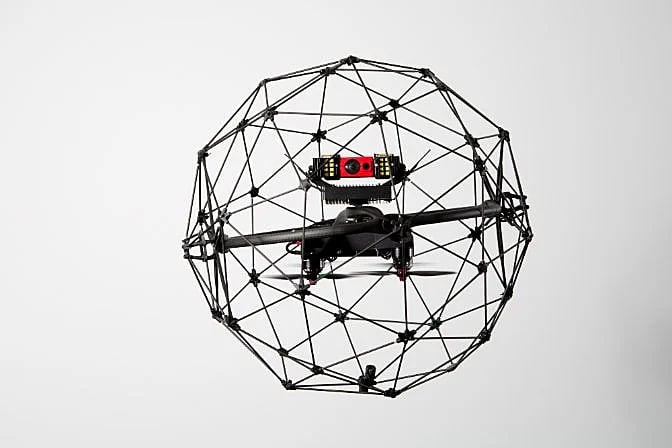
The decoupling works with a gimbal mechanism, which allows the drone to remain stable in flight even when the cage sustains a collision. The decoupling mechanism absorbs the impact of a collision in a way that preserves the drone’s stability while in the air. To put it more technically, the decoupled mechanism preserves “the neutral attitude of the aircraft.”
Compare this design to the add-on cage, where the drone simply sits in the middle of a cage to which it is attached. The slightest bump to the add-on cage will also bump the drone and change its flight path, while the drone in the decoupled cage might not move much at all, even when the cage sustains a significant blow.
Elios 1’s decoupled design worked well for flying in very tight spaces, and has been tested throughout the world in different confined-space scenarios. Experienced pilots have used its collision tolerance to experiment with new ways to fly, like rolling the drone across surfaces instead of avoiding them, and found that this approach can actually prolong battery life in some cases. This drone has since been discontinued and replaced with the Elios 3.
Considerations with Decoupled Drone Cages
One aspect of decoupled drone cages that impacts image collection is that the cage will appear in the image, but in many cases this does not really matter.
On the positive side, the Elios 1’s decoupled cage used a modular design made up of interchangeable pentagons, which makes it easy to swap out old sections with new ones in order to make repairs.
3. Fixed Drone Cages
Flyability’s Elios 2 and Elios 3 use a genuine fixed cage, which is the most advanced drone cage design that exists today.
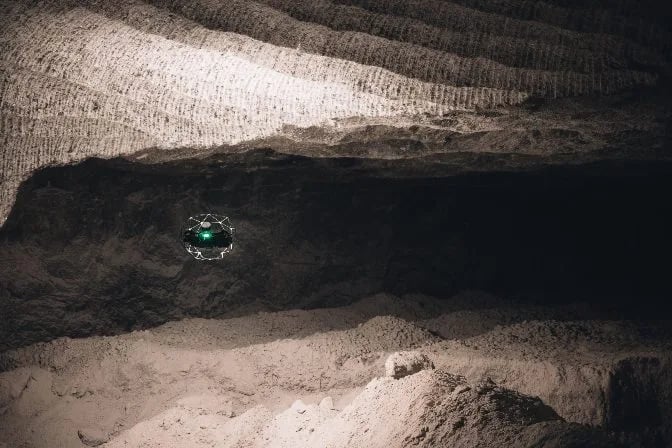
This design is very similar to an add-on cage in appearance but, unlike add-on cages, drones with a fixed cage are designed from the ground up to sustain collisions and that makes a huge difference. This is the case with the Elios 2 & 3, for example.
To support steady flying in confined spaces, the Elios 2 & 3 have a collision-resilient flight algorithm and motor controllers, which combine with the fixed cage design to help the drone fly safely even in tight spaces where collisions may be unavoidable. Not only does the cage preserve the propellers from getting damaged, but the collision-resilient nature of the flight algorithm and motor controllers also compensates for the flight instability created by collisions. These latter features won’t be found on a drone using an add-on cage.
In fact, the Elios 2 & 3’s design works so well at making the drone collision tolerant that it can sustain collisions on flat surfaces at speeds of up to 3 meters/second (almost 10 feet/second) without incurring any damage to the drone.
Considerations with Fixed Drone Cages
An important aspect of fixed drone cages is that they allow the drone to maintain a high degree of stability while in flight.
The Elios 3, which comes with a fixed drone cage, also boasts some notable features derived from direct input given by leaders in internal inspections. These include:
-
GPS-Free Stabilization. Allows pilots to stay stable and in control while flying
-
Distance Lock. Provides consistent data capture of long patterns
-
Full HD Live Streaming. High-quality visual data capture
-
Oblique Lighting. Allows inspectors to reveal textures and identify defects in the object being inspected
-
LiDAR sensor. Provides live 3D maps of all visual data.

